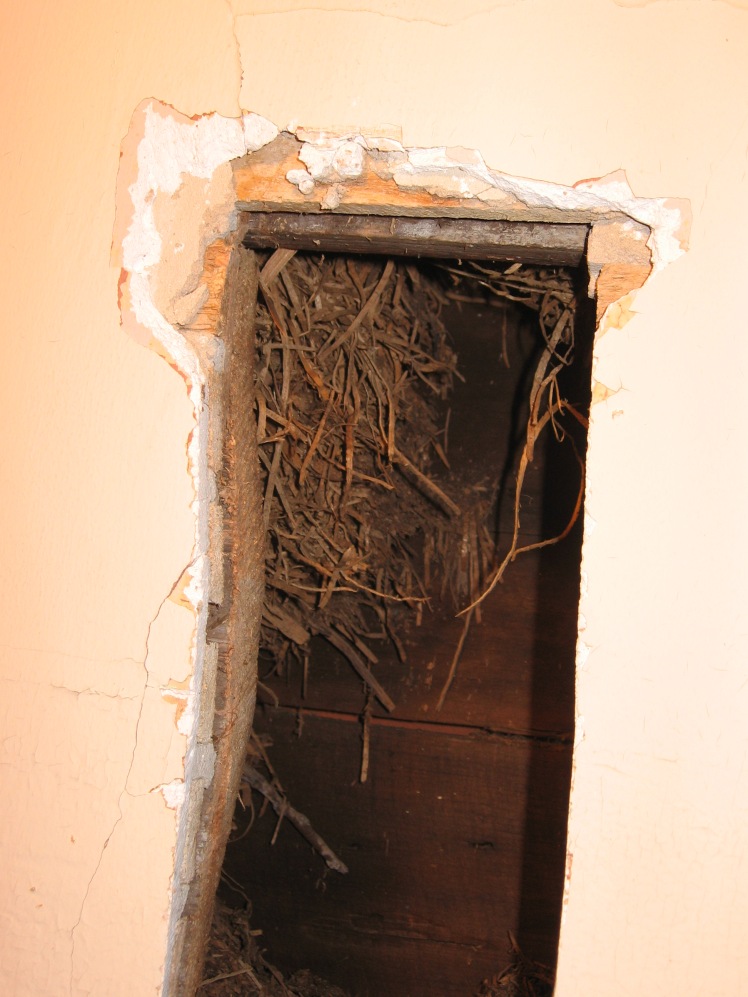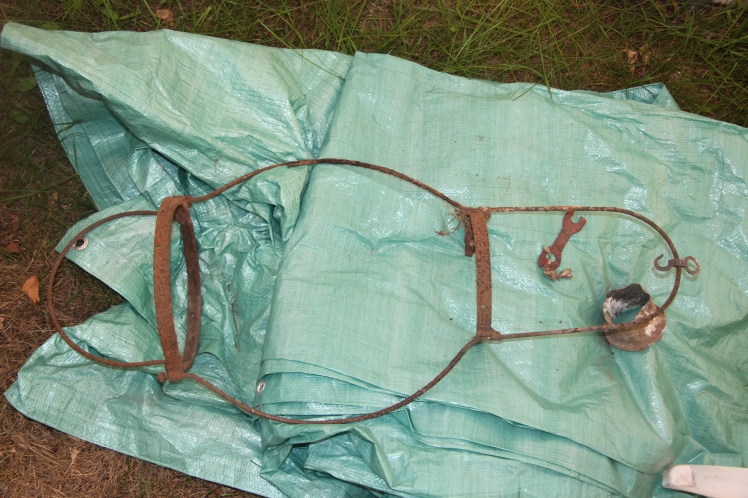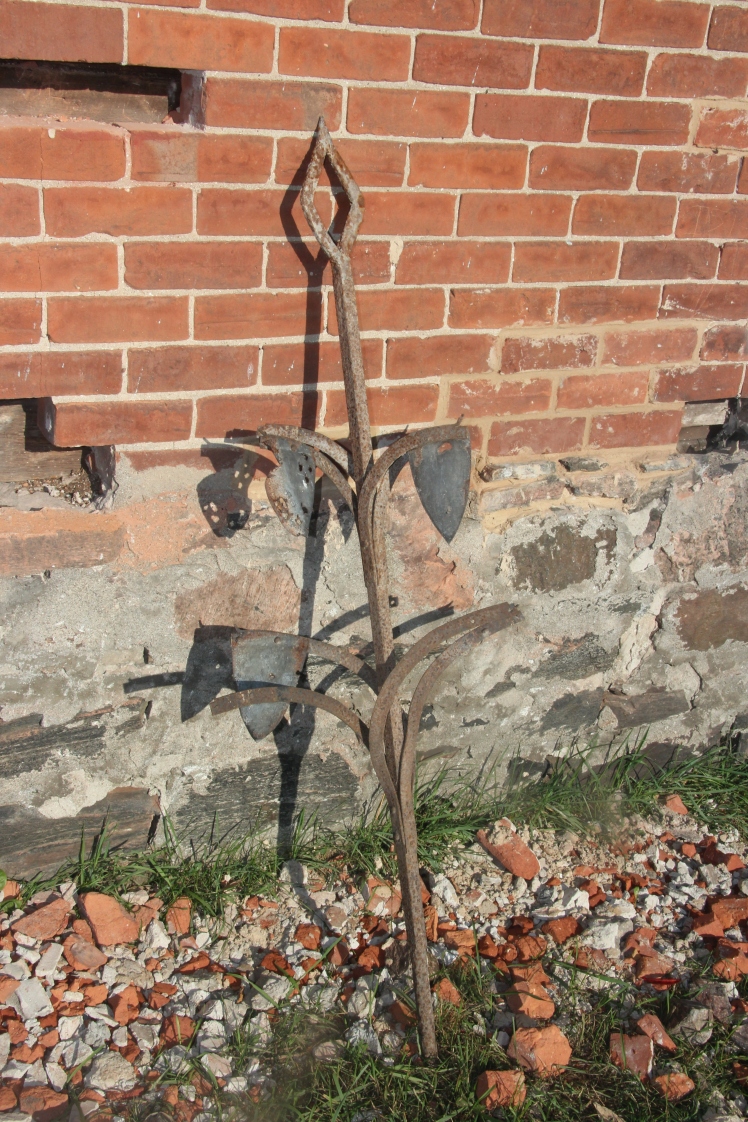Soon after we finalized the sale of the church and had the key in our hands we started really exploring what we had. Our contractor. Paul and his right hand man John met us at the church. Someone, I think it was my brother Glenn, suggested that I might want to be the one to punch the first hole in the wall. This is like knocking down your own sandcastle before others had a chance to, I used to teach my kids that that was my favourite part of building sandcastles but it really wasn’t. I just did not want to see their disappointed looks when we returned to their finished castles only to see someone else destroyed them.
We took pleasure in touring friends through the church and on one of these visits I picked up a hammer and knocked a hole through the lathe and plaster. I hit a post (That was a good find) so I had to make the hole bigger. A few minutes later I began knocking a hole in another spot until Dreamgirl stopped me. She was having none of this husband of hers knocking random holes in walls. Paul and John cut a hole where I had hammered the plaster. They found that behind the lathe and plaster was covering 1inch thick boards which were 12 inches wide. Us tradespeople call them 1 by 12s. Behind the 1 x 12s was 9inches of straw. The good news: I need to buy a planer to finish the 1x 12s to use as floorboards. The “studs” are 9 inches deep allowing ample room for insulation. Innsulating the walls this way would allow us to save the floorspace issues of building a new wall inside the structure to insulate. The bad news: straw is a good insulator but not so good at resisting flame. My insurance company will be much happier if I remove it. The best way to remove it is to take down all of the lath and plaster. That is a big hit in time, manpower and disposal costs.

We move to the rooms on either side of the pulpit. We are hoping the archway over the pulpit is framed with large timber which will look fantastic when exposed. The access hatches are designed for smaller men. Using my ladder,(mentioned in “What Surprises Were Hidden in that Tower”) Paul squeezes up on both sides to have a look. It is interesting to see that the plaster ceilings and mouldings extend right through above the sideroom ceilings. Disaapointment struck when it was declared that there are no timbers forming the archway.
Crawling underneath the church, Paul emerges with a piece of slate, most likely used on the steeple, pointing out the 2 nail holes drilled near the top. He also produces a carpenter’s plane, probably left behind during the construction of the church 130 years ago. A testament to how dry the crawl space is, there is minimal rust on the blade which still has a sharpened edge on it. Paul and John have seen enough and leave. Later, while clearing debris from the cellar, I discover 4 long posts with horseshoes driven in 4′ apart. One shows telltale signs of its purpose with gnaw marks beside the horseshoes. These were hitching posts. Paul lit up when he saw them and quickly proposed cleaning them and using them as railings in the loft.
I also discovered with the frame of an Aladdin  Lamp. This was a very large coal oil burning lamp with a round wick. There was also a large iron bar which I believe was the top to the steeple. A historian told me it may have connections to the Orange Lodge.
Lamp. This was a very large coal oil burning lamp with a round wick. There was also a large iron bar which I believe was the top to the steeple. A historian told me it may have connections to the Orange Lodge. There was a wooden barrel with the words “H. R. Maberly written on the top. This, I was told was probably from a local merchant “Harold Rigney” who operated a store in the 1870’s. Boxes of hymnals were found, left behind because we no longer hold these in our hands but look at words on an overhead screen. Some were inscribed with a memorial to a relative.
There was a wooden barrel with the words “H. R. Maberly written on the top. This, I was told was probably from a local merchant “Harold Rigney” who operated a store in the 1870’s. Boxes of hymnals were found, left behind because we no longer hold these in our hands but look at words on an overhead screen. Some were inscribed with a memorial to a relative.
I hope to find more treasures as we begin opening the walls next week. Maybe the names of people who worked on the church, maybe some tools, maybe even some refreshment bottles.





Wow those are some really great finds my Sister would defenatly love to see those Hitching posts I am sure
LikeLiked by 1 person